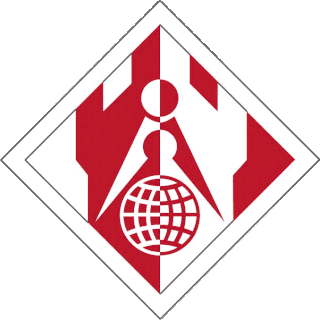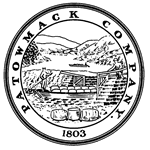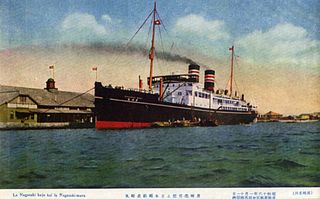
The United States Army Corps of Engineers (USACE) is the military engineering branch of the United States Army. A direct reporting unit (DRU), it has three primary mission areas: Engineer Regiment, military construction, and civil works. USACE has 37,000 civilian and military personnel, making it one of the world's largest public engineering, design, and construction management agencies. The USACE workforce is approximately 97% civilian, 3% active duty military. The civilian workforce is primarily located in the United States, Europe and in select Middle East office locations. Civilians do not function as active duty military and are not required to be in active war and combat zones; however, volunteer opportunities do exist for civilians to do so.

The Intracoastal Waterway (ICW) is a 3,000-mile (4,800 km) inland waterway along the Atlantic and Gulf of Mexico coasts of the United States, running from Massachusetts southward along the Atlantic Seaboard and around the southern tip of Florida, then following the Gulf Coast to Brownsville, Texas. Some sections of the waterway consist of natural inlets, saltwater rivers, bays, and sounds, while others are artificial canals. It provides a navigable route along its length without many of the hazards of travel on the open sea.

The Potomac Company was created in 1785 to make improvements to the Potomac River and improve its navigability for commerce. The project is perhaps the first conceptual seed planted in the minds of the new American capitalists in what became a flurry of transportation infrastructure projects, most privately funded, that drove wagon road turnpikes, navigations, and canals, and then as the technology developed, investment funds for railroads across the rough country of the Appalachian Mountains.
Internal improvements is the term used historically in the United States for public works from the end of the American Revolution through much of the 19th century, mainly for the creation of a transportation infrastructure: roads, turnpikes, canals, harbors and navigation improvements. This older term carries the connotation of a political movement that called for the exercise of public spirit as well as the search for immediate economic gain. Improving the country's natural advantages by developments in transportation was, in the eyes of George Washington and many others, a duty incumbent both on governments and on individual citizens.
The Commission to Explore a Route for a Canal to Lake Erie and Report, known as the Erie Canal Commission, was a body created by the New York State Legislature in 1810 to plan the Erie Canal. In 1817 a Canal Fund led by Commissioners of the Canal Fund was established to oversee the funding of construction of the canal. In 1826 a Canal Board, of which both the planning commissioners and the Canal Fund commissioners were members, was created to take control of the operational canal. The term "Canal Commission" was at times applied to any of these bodies. Afterwards the canal commissioners were minor state cabinet officers responsible for the maintenance and improvements of the state's canals.
The Conference of Governors was held in the White House May 13–15, 1908 under the sponsorship of President Theodore Roosevelt. Gifford Pinchot, at that time Chief Forester of the U.S., was the primary mover of the conference, and a progressive conservationist, who strongly believed in the scientific and efficient management of natural resources on the federal level. He was also a prime mover of the previous Inland Waterways Commission, which recommended such a meeting the previous October. On November 13, 1907, the President issued invitations to the governors of the States and Territories to meet at the White House on those dates. This 1908 meeting was the beginning of the annual governors' conferences, now held by the National Governors Association.

The Danube Commission is concerned with the maintenance and improvement of navigation conditions of the Danube River, from its source in Germany to its outlets in Romania and Ukraine, leading to the Black Sea. It was established in 1948 by seven countries bordering the river, replacing previous commissions that had also included representatives of non-riparian powers. Its predecessor commissions were among the first attempts at internationalizing the police powers of sovereign states for a common cause.

A shipping line or shipping company is a company whose line of business is ownership and operation of ships.
Pacific Northwest Waterways Association, also known as PNWA, is a collaboration of ports, businesses, public agencies and individuals who combine their economic and political strength in support of navigation, trade and economic development throughout the Pacific Northwest.
Title 33 of the United States Code outlines the role of navigable waters in the United States Code.

The Mount Vernon Conference was a meeting of delegates from Virginia and Maryland held at Mount Vernon on March 21–28, 1785, to discuss navigational rights in the states' common waterways. On March 28, 1785, the group drew up a thirteen-point proposal to govern the rights of both states on the Potomac River, Pocomoke River, and Chesapeake Bay. Known as the Mount Vernon Compact and formally titled as the Compact of 1785, this agreement not only covered tidewater navigation but also extended to issues such as toll duties, commerce regulations, fishing rights, and debt collection. Ratified by the legislature of both states, the compact helped set a precedent for later meetings between states for discussions into areas of mutual concern.

The history of turnpikes and canals in the United States began with work attempted and accomplished in the original thirteen colonies, predicated on European technology. After gaining independence, the United States grew westward, crossing the Appalachian Mountains with the admission of new states and then doubling in size with the Louisiana Purchase in 1803. The only means of transportation at the time between the coastal states and interior lands remained on water, by canoe, boat and ship, or over land on foot and by pack animal. Recognizing the success of Roman roads in unifying that empire, political and business leaders in the United States began to construct roads and canals to connect the disparate parts of the nation.

Alexander Mackenzie was an American engineer.
The Water Resources Development Act of 1986 is part of Pub. L. 99–662, a series of acts enacted by Congress of the United States on November 17, 1986.
Rivers and Harbors Act may refer to one of many pieces of legislation and appropriations passed by the United States Congress since the first such legislation in 1824. At that time Congress appropriated $75,000 to improve navigation on the Ohio and Mississippi rivers by removing sandbars, snags, and other obstacles. Like when first passed, the legislation was to be administered by the United States Army Corps of Engineers (USACE), under its Chief Engineer and the Secretary of War.
Water Resources Development Act of 1976,, Pub. L. 94–587 is a public law enacted on October 22, 1976, by the Congress of the United States of America concerning various water resources and projects.
The Water Resources Development Act of 1992, Pub. L. 102–580, was enacted by Congress of the United States on October 31, 1992. Most of the provisions of WRDA 1992 are administered by the United States Army Corps of Engineers.
The Water Resources Development Act of 2000, Pub. L. 106–541 (text)(PDF), was enacted by Congress of the United States on December 11, 2000. Most of the provisions of WRDA 2000 are administered by the United States Army Corps of Engineers.

The National Irrigation Congress was held periodically in the Western United States beginning in 1891 and ending in 1916, by which time the organization had changed its name to International Irrigation Congress. It was a "powerful pressure group."

The Federal Agency for Sea and Inland Water Transport is a federal executive body in Russian Federation. It is entrusted to manage state property, maintain transport security-related tasks and provide services in the field of maritime and inland waterway transport. It is under the jurisdiction of the Ministry of Transport of the Russian Federation.










